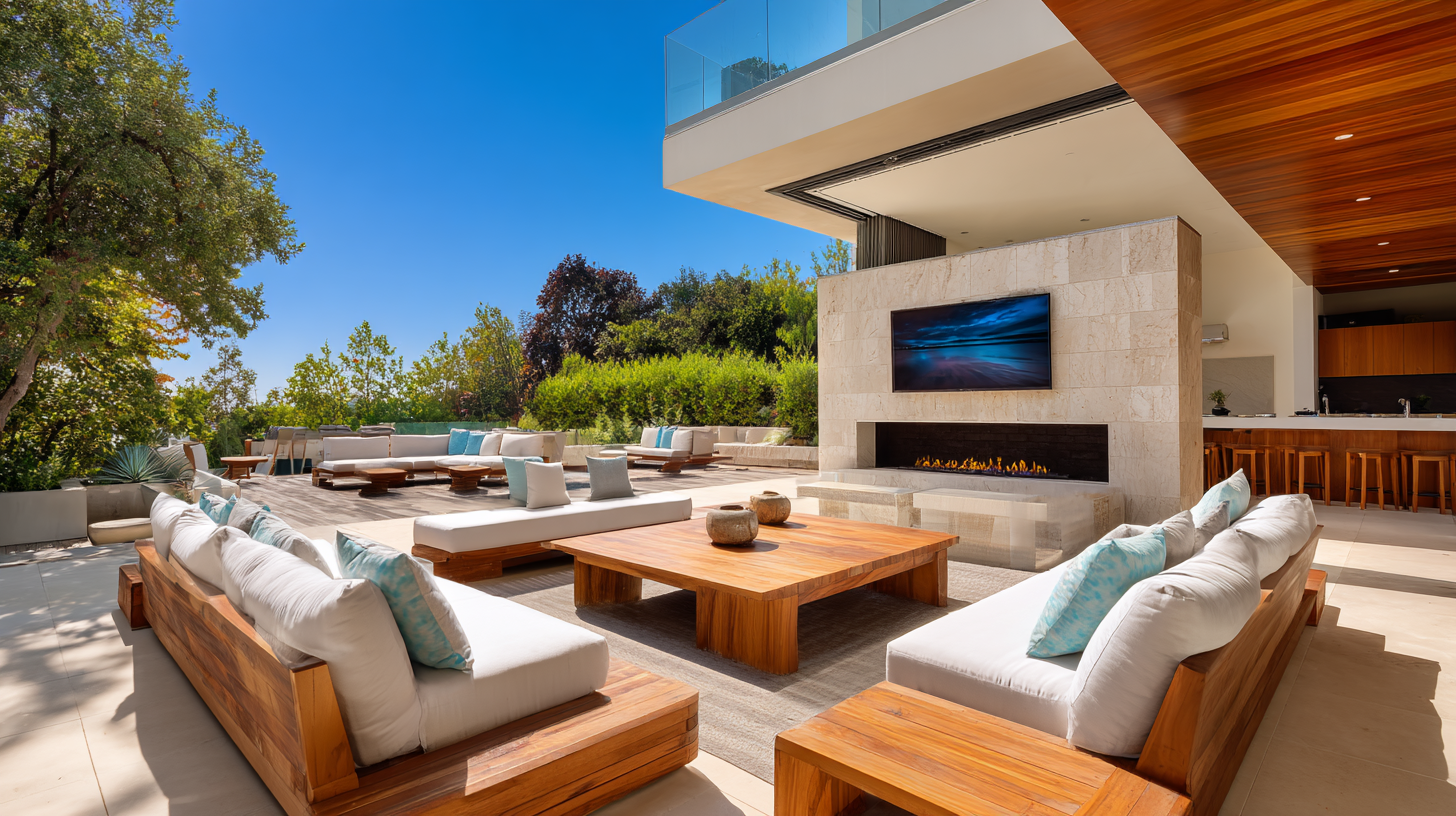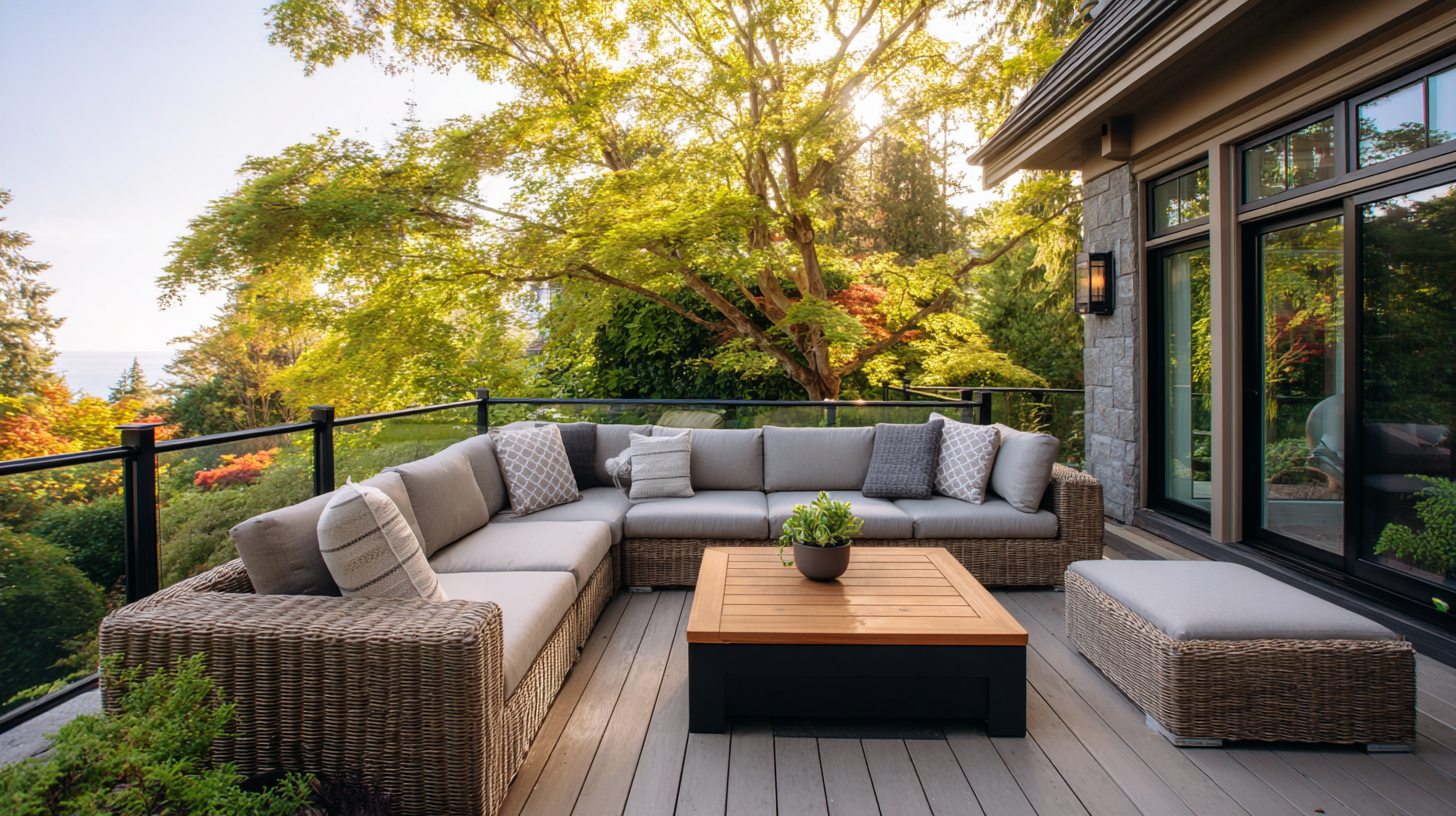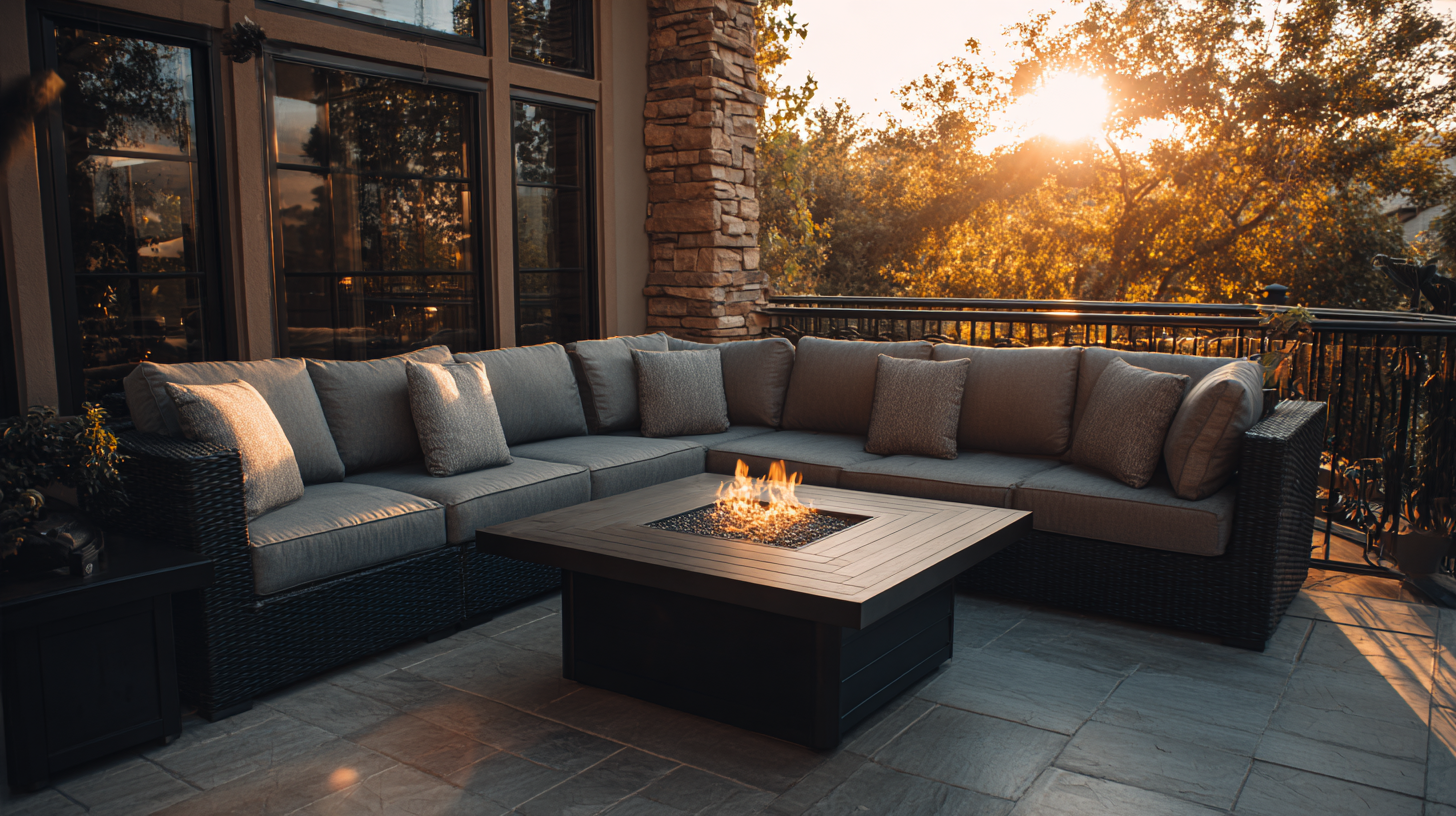Addressing Challenges in Selecting the Best Outdoor Lounge Options for Your Global Supply Needs
In today's competitive global marketplace, selecting the best Outdoor Lounge options for your supply needs has become increasingly complex. According to a recent industry report by Grand View Research, the global outdoor furniture market is projected to reach $50 billion by 2025, with outdoor lounges playing a crucial role in this growth. As more consumers prioritize outdoor living spaces, the demand for high-quality, durable, and stylish Outdoor Lounge solutions is surging.

China, known for its manufacturing prowess, stands out as a leading exporter, providing a diverse range of outdoor lounge products that cater to varied aesthetic and functional preferences. Navigating this landscape involves understanding the key challenges, such as quality assurance, supply chain logistics, and compliance with international standards—factors that can significantly impact both cost and consumer satisfaction.
Identifying Key Factors in Outdoor Lounge Selection for Global Markets
When selecting outdoor lounge options for global markets, it's crucial to identify key factors that influence both consumer preferences and logistical feasibility. One significant aspect is cultural context, as designs that appeal to one region may not resonate in another. For instance, minimalist styles may be favored in urban settings, while more ornate, traditional designs could be preferred in places with rich cultural heritages. Understanding these nuances can guide manufacturers and retailers in curating a selection that is both aesthetically pleasing and culturally relevant.
Moreover, durability and material selection are paramount considerations in outdoor lounge furniture. Different climates require distinct materials; for example, coastal regions may necessitate rust-resistant metals, while areas with high humidity could benefit from mold-resistant fabrics. Additionally, sustainability is becoming a key driver in purchasing decisions worldwide. Consumers are increasingly leaning towards eco-friendly materials and manufacturing processes, which not only address environmental concerns but also enhance brand loyalty. By meticulously evaluating these factors, companies can more effectively navigate the complexities of global supply needs and create products that truly resonate with their target audiences.
Understanding the Impact of Quality Standards in Export Manufacturing
In the competitive landscape of outdoor lounge manufacturing, the influence of quality standards on export success cannot be overstated. International markets demand products that not only meet aesthetic expectations but also comply with stringent durability and safety standards. As manufacturers strive to cater to a global clientele, understanding these standards is crucial. Compliance ensures that the products can withstand various climatic conditions while also adhering to health and safety regulations that vary from one country to another.
Moreover, quality standards serve as a benchmark for manufacturers aiming to differentiate their offerings in a crowded marketplace. By aligning with internationally recognized certifications, manufacturers can enhance their credibility and build trust with consumers. This commitment to quality directly impacts their ability to penetrate new markets and expand their supply chains. As companies navigate the complexities of export manufacturing, prioritizing quality standards will play a pivotal role in meeting customer expectations and sustaining competitive advantage in the outdoor lounge sector.
Quality Standards in Outdoor Lounge Manufacturing
Navigating Supply Chain Challenges for Outdoor Lounge Products
When it comes to sourcing outdoor lounge products, navigating the complexities of the global supply chain can be daunting. Factors such as fluctuating demand, transportation delays, and supplier reliability critically impact the selection process. To ensure that you choose the best outdoor lounge options for your needs, it is essential to stay informed about the supply chain landscape and adapt your sourcing strategies accordingly.
**Tip:** Establish relationships with multiple suppliers to create a diversified supply base. This not only mitigates risks associated with reliance on a single provider but also offers flexibility in pricing and availability. Being proactive in communication with your suppliers can help you forecast shortages and adapt your orders in advance.
Additionally, consider leveraging technology to streamline your supply chain management. Tools such as inventory tracking systems and analytics software can provide real-time insights into stock levels and delivery times, allowing for more informed decision-making.
**Tip:** Regularly review and assess your logistics partners to ensure they can meet your evolving needs. Building a strong partnership with reliable logistics providers can enhance your ability to respond quickly to changes in the market, ultimately leading to better customer satisfaction and a more efficient supply chain.
Addressing Challenges in Selecting the Best Outdoor Lounge Options for Your Global Supply Needs - Navigating Supply Chain Challenges for Outdoor Lounge Products
| Product Type | Material | Supplier Region | Lead Time (weeks) | Price Range ($) | Sustainability Rating |
|---|---|---|---|---|---|
| Sectional Sofa | Aluminum, UV-resistant Fabric | Asia | 12 | 800 - 1200 | 4/5 |
| Lounge Chair | Teak Wood | South America | 10 | 500 - 900 | 5/5 |
| Daybed | Synthetic Rattan | Europe | 14 | 600 - 1100 | 3/5 |
| Outdoor Couch | Powder-coated Steel, Weatherproof Fabric | North America | 8 | 700 - 1400 | 4/5 |
| Hammock | Cotton, Nylon | Central America | 6 | 100 - 300 | 5/5 |
Evaluating Design Trends in Outdoor Lounging Across Different Regions
In recent years, outdoor lounging has evolved into a vibrant segment of the furniture market, shaped by distinct design trends in various regions. For instance, according to the International Furniture Fair, North American consumers gravitate towards multifunctional outdoor furniture that combines style and practicality, while European designs often emphasize minimalism and sustainability, using eco-friendly materials. These preferences highlight the diverse factors influencing global supply choices and the importance of region-specific design insights.
**Tip:** When selecting outdoor lounge options, consider the climate and lifestyle of your target market. For example, in warmer regions, durability and UV resistance are critical, while cooler climates may benefit from portable or adaptable seating that can be easily stored.
Moreover, emerging trends indicate a shift towards biophilic design, which integrates natural elements and focuses on creating immersive outdoor experiences. A report by the Global Design Institute shows that 65% of consumers prefer lounges that create a connection with nature, further driving demand for products that enhance outdoor aesthetics.
**Tip:** To tap into these trends, source materials that are not only stylish but also eco-friendly, ensuring you align with consumer preferences that prioritize sustainability.

Strategies for Collaborating with Leading Manufacturers in Global Supply Chains
In navigating the complexities of global supply chains, collaborating with top manufacturers is crucial for sourcing the best outdoor lounge options. According to a report by Deloitte, over 79% of companies highlighted supplier collaboration as a key driver for enhancing their competitive advantage. By establishing strong relationships with leading manufacturers, businesses can ensure better quality control, timely deliveries, and innovative products that meet customer expectations.

To maximize the benefits of these collaborations, companies should consider implementing strategic partnership frameworks. Research from McKinsey suggests that companies that engage collaboratively with suppliers can reduce procurement costs by 10-15% while also improving product design and development speeds. Additionally, leveraging technology such as supply chain management software facilitates real-time communication and data sharing, enabling manufacturers and suppliers to respond more swiftly to market demands and disruptions. By adopting these strategies, businesses can effectively tackle the challenges of selecting the right outdoor lounge options while enhancing their supply chain resilience.
